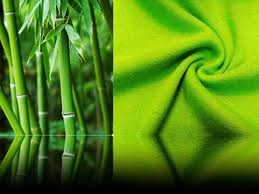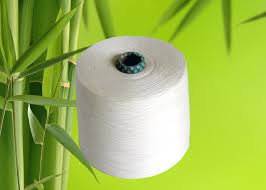As a follow up to my previous article on an overview on eco-friendly fibers, this one would give an insight into how exactly the natural fibers are useful and how beneficial they to a person. Many of these effects are dismissed as superficial, but in actuality, they have verifiable proof.
Though natural fabrics are generally worn for ecological reasons, there are varied health benefits that spring out of placing your skin only against natural fibers. The advantages of natural fibers which arise due to their inherent characteristics are in temperature regulation, breathability, water absorption, durability, properties that help fight microbes and much more. On the other hand, the use of synthetic fabrics has the following disadvantages.
Synthetic fabrics can actually disrupt normal body function. This is because of inadequate breathability, thermal regulation and water absorption (also called hygroscopy). In a high temperature environment, such as in tropical countries, this can even lead to heat strokes. Contrarily in low temperature climates, synthetic fabrics can cause us to get too cold, leading to sickness. Moreover, synthetic fabrics can actually create a kind of a “Greenhouse Effect”, which can potentially disrupt the skin’s normal reaction of barrier creation and causes a suitable condition for the growth of bacteria, which in turn can lead to the causation or the aggravation of disorders of the skin or even allergic reactions.
The eco-friendly fabrics that have been discussed until this point need not always be naturally occurring. With the rapid advancements that are taking place in technology every day, some companies that are conscientious of their role in saving the planet are coming up with fabrics that possess all the natural qualities of the natural fibers, or at least as close to them as possible and are manufactured in a manner that is both sustainable and conforms to high environmental standards.
It is assumed that there are only two categories by which fibers are classified in a broad manner. One of this is the collection of natural fibers which includes cotton, hep, wool, silk, ramie, etc. and the other which comprises artificial fibers which are synthesized from petrochemicals, namely, nylon and polyester.
But there is also a third category which encompasses the fibers listed below.
The first one is a rather surprising inclusion for almost nobody thinks of this fast growing grass type when one thinks about fibers or fabrics. Yes, you read it right. Fast growing grass. Bamboo it is. Bamboo is not just a fabric but an extremely versatile one at that. It is good for both the human body and the environment. Bamboo fabric is made using the cellulose that is extracted from the bamboo plant and can be easily fabricated into soft, easy to care, fabrics that are washable by machines. It is wonderful to wear or to furnish in homes. It is very comfortable and breathable, with an excellent ability to absorb moisture by capillary action and it also dries quickly. It also naturally has protection against microbes, which inhibit the growth of bacteria and fungi by design, thus reducing odor. It serves as an effective protection against perspiration and stains and thus, our clothes retain a fresh look for a much longer period. Clothes made of bamboo retain their antimicrobial properties not only the first time, but even after washing multiple times. Another good thing about bamboo clothes is that it is extremely unlikely to cause an allergic reaction.
Bamboo clothes combine the benefits of other types of clothing into one compact package. They are as soft as or even softer than cotton, with a finish that makes their texture similar to silk, the sheen included. It can be washed more easily than silk and acts like a personal air conditioner which keeps you warm during winter and cool during summer. Best of all are its benefits in the process of dyeing. These types of clothes can be dyed with astonishing ease, with little or no use of harsh chemicals.
Bamboo clothes are just what the doctor ordered for the environment because they help the Earth in multiple ways right from the time of growth of bamboo till the process of production and finally wearing of clothes by the general public.
During the growth stages, bamboo is advantageous as it takes very little time to grow. Thus giant plantations of bamboo can be grown and harvested very easily to get the products required for our use. Bamboo also has a much higher capacity to release oxygen into the atmosphere, thus improving the percentage of the life giver in the atmosphere. Bamboo can also be grown in harsh climatic and geographical regions, that too without the excessive use of insecticides and pesticides. Thus, there is not much danger to the water table or any danger due to bio-magnification. The roots of the bamboo plant reach far and wide into the soil and thus, a system of bamboo roots, akin to that of a plantation are an effective means to prevent soil erosion. Last, but definitely not the least, since the clothes are almost a hundred percent biodegradable, they do not pose any threat to the environment after disposal. They also last longer, making frequent shopping sprees unnecessary.
Thus, bamboo clothes are definitely the way of the future.


Leave a Reply